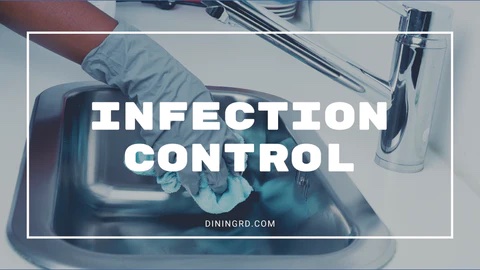
As foodservice professionals, sanitation has long been a cornerstone of operations, ensuring the prevention of foodborne illness. Previously, the term infection control may have been reserved for nursing care. Today, infection control is everyone’s responsibility – now more than ever.
Here are 5 steps to implementing infection control best practices for foodservice:
1. Beyond Gloves – Using PPE
Disposable gloves have been an industry standard for handling ready-to-eat foods. But when gloves aren’t enough, what other Personal Protective Equipment (PPE) is needed? For starters, be sure your community has a policy related to PPE and educate all team members on the policy expectations. You may use these resources to help with best practices for using PPE correctly: Using a Face Mask (CDC Resource) and PPE Sequence (CDC Resource).
2. Clean, Sanitize, and Disinfect
Still confused about the difference between sanitizing and disinfecting? See our previous post to learn all about it! Be sure to familiarize yourself and your team members with the chemicals and cleaning solutions used in your department and in the community.
- Continue to practice sanitation best practices for food contact surfaces – Click here to access an employee in-service on sanitizing
- For high-touch areas such as door knobs, light switches, handles, etc., implement additional disinfecting protocols using an EPA approved disinfectant known to kill COVID-19 – additional EPA resources on disinfecting
- As an additional disinfecting procedure, dishware such as plates, silverware, drinkware, etc. can be soaked in a disinfectant bleach solution prior to normal ware-washing as a precautionary measure
3. Practice improved personal hygiene
Hand hygiene is more important than ever before! Remember, hand sanitizer is never a replacement for hand washing. Access a flyer about hand washing here.
4. Update employee competencies
It didn’t happen unless it was documented – especially when it comes to employee competencies. Be sure to keep excellent records of all in-service held and who attended. Use this form to document on behaviors and competencies observed.
5. Minimizing risk during dining
Communities may continue to utilize in-room dining to minimize close contact in the dining room. Be sure to carefully consider the procedure for disinfecting food transportation carts as well as procedures for COVID positive or isolation rooms.
